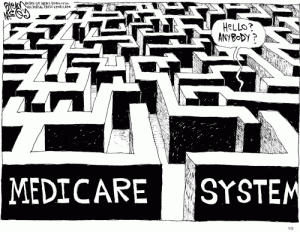By Jack Cumming
As is true of senior living, cruise ships appear to give little thought to inequities of birth that distinguish low-wage workers from those they serve. On cruise ships, the passengers have an entitlement affluence that distinguishes them from the crew. Most passengers never notice.
Cruising and Living.
In market-priced senior living, as on cruise ships, most residents similarly have an entitlement affluence which distinguishes them from the clock-in workers who clean their bathrooms and do other chores. If anything, the distinction is more pronounced in senior living, perhaps because of the age restriction. The fact of the matter is that most of today’s senior living residents stem from the time of Andy Griffith’s Mayberry when, as Ted Koppel dramatized recently on CBS Sunday Morning, people of color, for instance, were relegated to the periphery and seldom seen.
That age distinction is absent on cruise ships. Sure, there are plenty of old people, walkers, and motorized scooters, but there are also active adults and a smattering even of young adults. On ships that cater to families, those amusement park attractions also draw children, lots of them. On the whole, though, without that age restriction, cruise ships are more diverse than most CCRCs.
A Sad Difference.
My wife and I often cruise. In fact, we are on a cruise as I write. It’s summer, and there are many, many children on board. At breakfast this morning there was a very pleasant woman from the Philippines who tidied our table and brought us coffee and orange juice. I watched as she cheerfully pursued her duties and responsibilities. She seemed to do more, much more, than her crew associates.
At the next table was a family with many children. They must be children of privilege because I’ve seldom seen more demanding youngsters. One wanted more orange juice. Another curtly demanded, “Get me eggs,” before returning to her smartphone. Our Philippine friend took it all in stride. I suppose it’s the normal culture on board a cruise ship. She did as the children commanded, and she did so with the same good nature that she seemed to bring to everything.
When she came to clear away dishes, I asked her if she had children. “Yes,” she said, “I have an 11-year-old daughter. My sister cares for her.” I asked if her daughter had ever been on a cruise. “Oh, no,” she replied. “Would you like her to have a chance to cruise?” I persisted. “No,” she said, “she’s too old for that.” She looked around furtively, perhaps checking for bosses, and she returned to her tasks. I felt sad and empty.
Cruising and the CCRC Life.
We often hear of the similarities between cruising and senior living. In senior living, there is a bright line between clock-in workers and other staff and a grey line between staff and residents. That is similar to the shipboard hierarchy of (1) menial workers at the bottom; (2) a middle tier of supervisors, entertainers, and the like; and (3) the command tier of officers led by the captain. In senior living, the executive director is the captain.
As I sat over breakfast coffee alone with my thoughts, my mind couldn’t get away from the sad irony of a Philippine woman catering to the demands of privileged American children while her own children could never have such an experience. For the serving mother, it’s her opportunity to lift herself, and her family back home, from the poverty of her birth. For the American mother, it’s an entitlement to be taken for granted.
What’s Fair?
We’re Americans, and we’re privileged. Is that just? Is that fair? Is that equitable? Those are questions best left to each individual’s conscience. Senior living does meet standards of diversity, equity, and inclusion, but only along a vertical axis. Those who have traditionally been underprivileged remain as clock-in workers at the bottom of the scale. The upper management tier in senior living mostly comes from the privileged sector, college graduates of fair complexion.
And then, there are the residents. The question people of color often ask their friends who may be attracted to senior living is, “Do you see many people there who look like us?” They are talking of marketing brochures, marketing staff, and the residents they are allowed to meet during visits.
As for the injustice and insensitivity of those at the top toward those at the bottom, that may just have to wait for a new generation of leaders and the dawn of a new cultural era. I once hoped that a new era of opportunity would come in my lifetime. As that bright hope fades, my heart still pines for the day when justice will radiate from the words carved into the temple of the U. S. Supreme Court. “Equal Justice Under Law.” That’s our ideal, not yet our reality.








